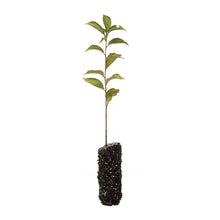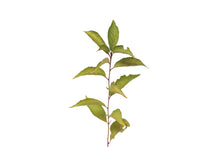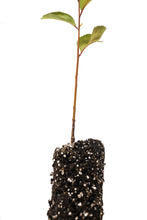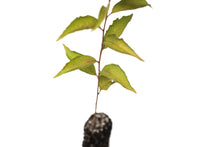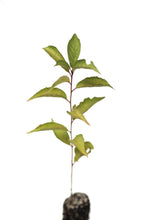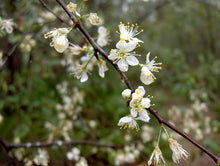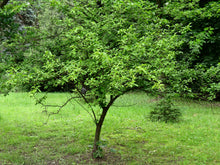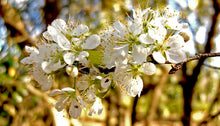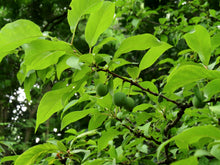
Prunus americana
-
Grow your own American Plum, a small, hardy plum tree with showy, fragrant flowers and bright, tart-sweet fruit
- 100% guaranteed
- Seed-grown on California's Redwood Coast
- Transplanting and care instructions included
 |
Moisture Medium |
 |
Cold Hardiness -20°F |
 |
Light Full Sun / Partial Shade |
 |
Size 5 – 18' tall / 5 – 18' spread |
 |
Lifespan 20 yrs |
 |
Growth Rate Medium |
 |
Drought Tolerance Low |
 |
Wind Resistance Medium |
About American Plum
From the U.S. Forest Service:
"American plum's form is usually shrubby, but it may grow as a small tree. It ranges from 3.3 to 33 feet (1–10 m) tall. It is likely to grow tallest and assume tree form in its southern distribution. American plum usually grows as a small, single-stemmed tree in southern Alabama, Georgia, and Florida. American plum trees have short, crooked trunks with stiff lateral branches that form wide, flat-topped, irregular crowns. Tree trunks may reach 12 inches (30 cm) in diameter. Crowns are spreading. The national champion tree is 18 feet (5.5 m) tall, 3.8 feet (1.1 m) in diameter, and 18 feet in spread; it grows in Fairfax County, Virginia. American plum wood is moderately heavy and hard. Bark is "moderately" thick. Some to all branches are spurred, becoming more so with age. Bottom branches typically grow low to the ground.
American plum is deciduous. Leaves are narrow with sharp teeth; they are 3 to 5 inches (8–13 cm) long. Flowers and fruits grow on short spur shoots. The flowers are strongly fragrant and showy, about 1 inch (2.5 cm) across. Fruits are yellow or red drupes, 0.8 to 1.3 inches (2.0–3.2 cm) in diameter. They may be solitary or in clusters. The seed is a smooth, compressed stone.
American plum was used extensively by Native Americans. Havard speculates that Native Americans were cultivating American plums near villages before the arrival of Europeans. The Pima of Arizona and Mexico cultivated American plums since at least the period of Hispanic occupancy (1600s to mid-1800s). The Cheyenne ate the plums fresh, dried, and cooked in desserts. Fruits were also used in medicines. Branches were used to make the altar for the Sun Dance. The Navajo made red dye from the roots."
About Jonsteen's Seedlings
All of our trees are seed-grown at our nursery on California's Redwood Coast, which is inspected monthly and licensed by the California Department of Agriculture. Trees can provide a natural barrier against high winds, temperatures, noise pollution and soil erosion, all while benefiting local air quality, wildlife and property values — a Jonsteen seedling will only grow in value and beauty
About Jonsteen's 100% Guarantee
All of our trees are guaranteed to arrive healthy and in good condition. If your tree perishes despite your honest efforts, we will be happy to replace it with a small-sized seedling for just the cost of shipping/handling (typically around $5). You can learn more about our guarantee and tree replacement policy here.
Seedling Size Chart: Medium
Due to the dynamic nature of actively growing trees, as well as the tremendous variation between species’ growth rates, we rely on the cubic volume of a seedling’s root mass to determine its “size” (Small / Medium / Large / XL). Within each size there is minor variance — the dimensions provided here represent the category minimum. If exact measurements are essential, please contact us about current stock.










